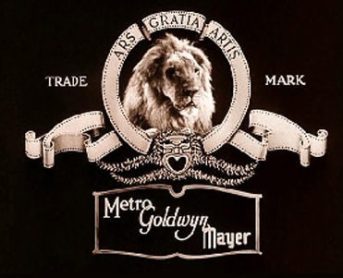Enough is enough: I’ve been watching old movies my whole life and never understood why the end card of every RKO Radio Picture included the words “Reg. U.S. Pat. Off.” With pandemic time on my hands I set out to find the answer.

After all, Leo the MGM lion bore the words TRADE and MARK on either side of the roaring beast, putting to rest a childhood belief that Trade and Mark were the names of the Smith Brothers of cough-drop fame.

My friend Eric Kurland, who has mastered the art of internet research, checked the files of the U.S. Patent Office online and discovered that in 1929 the newly-formed Radio Pictures filed a trademark claim, NOT on their impressive image of a radio tower atop a spinning globe. This was for the inverted-triangle graphic design that appeared at the end of every studio release, accompanied by the company name “Radio Pictures.” (Note that this occurred before the addition of RKO to the company name.) Here is the actual application:
| Word Mark | RADIO PICTURES |
| Goods and Services | (EXPIRED) IC 009. US 026. G & S: FILMS ADAPTED FOR REPRODUCTION AND CONTAINING RECORDED IMAGES OF PICTURES AND/OR RECORDED SOUND. FIRST USE: 19290123. FIRST USE IN COMMERCE: 19290123 |
| Mark Drawing Code | (3) DESIGN PLUS WORDS, LETTERS, AND/OR NUMBERS |
| Serial Number | 71278717 |
| Filing Date | January 31, 1929 |
| Current Basis | 1A |
| Original Filing Basis | 1A |
| Registration Number | 0266145 |
| Registration Date | January 14, 1930 |
| Owner | (LAST LISTED OWNER) R K O PRODUCTIONS INC. CORPORATION DELAWARE NEW YORK NEW YORK |
| Disclaimer | THE WORD “PICTURES” FORMS A PART OF THE REGISTRATION SOUGHT ONLY IN COMBINATION AND IN ASSOCIATION WITH THE OTHER FEATURES OF THE MARK SHOWN IN THE DRAWING. |
| Description of Mark | THE LINING IN THE DRAWING IS FOR THE PURPOSE OF INDICATING SHADING ONLY |
| Type of Mark | TRADEMARK |
| Register | PRINCIPAL |
| Live/Dead Indicator | DEAD |
The government agency that processes all this material was founded 185 years ago. Today it is called the U.S. Patent and Trademark Office and is a division of the Department of Commerce. It facilitates the issuing of patents to inventors and trademarks to owners of products and intellectual property.

So why did some companies choose to boast of their registration while others, like Universal and 20th Century Fox, didn’t? We may never know. (Leon Schlesinger’s Looney Tunes and Merrie Melodies were also Reg. U.S. Pat. Off.) RKO even inserted a Registration mark (an R in a circle) onscreen in the opening credits of their latter-day features, so these matters kept company lawyers busy.

You can see the inverted-triangle logo painted on a soundstage wall facing Gower Street in Hollywood, with contract player Anne Shirley in the foreground in this 1934 photo. It remained intact until Desilu Productions purchased RKO and its facilities in 1957; in 1962, Paramount bought out Desilu and merged the neighboring studio facilities. When my wife and I moved to Hollywood in 1983 the original trademark was still faintly visible, along with the freshly-painted Paramount logo, peeking out under several coats of whitewash.

In 1994 Paramount commissioned the renowned underwater artist Robert Wyland to create a mural that filled the entire wall of Stage 29. Nothing against whales, or Wyland, but I’m glad I had a chance to photograph it first!
Now, whenever I see that legend “Reg. U.S. Pat. Off” at the end of King Kong, Swing Time, or Mexican Spitfire Sees a Ghost, I’ll know what it means… sort of.








